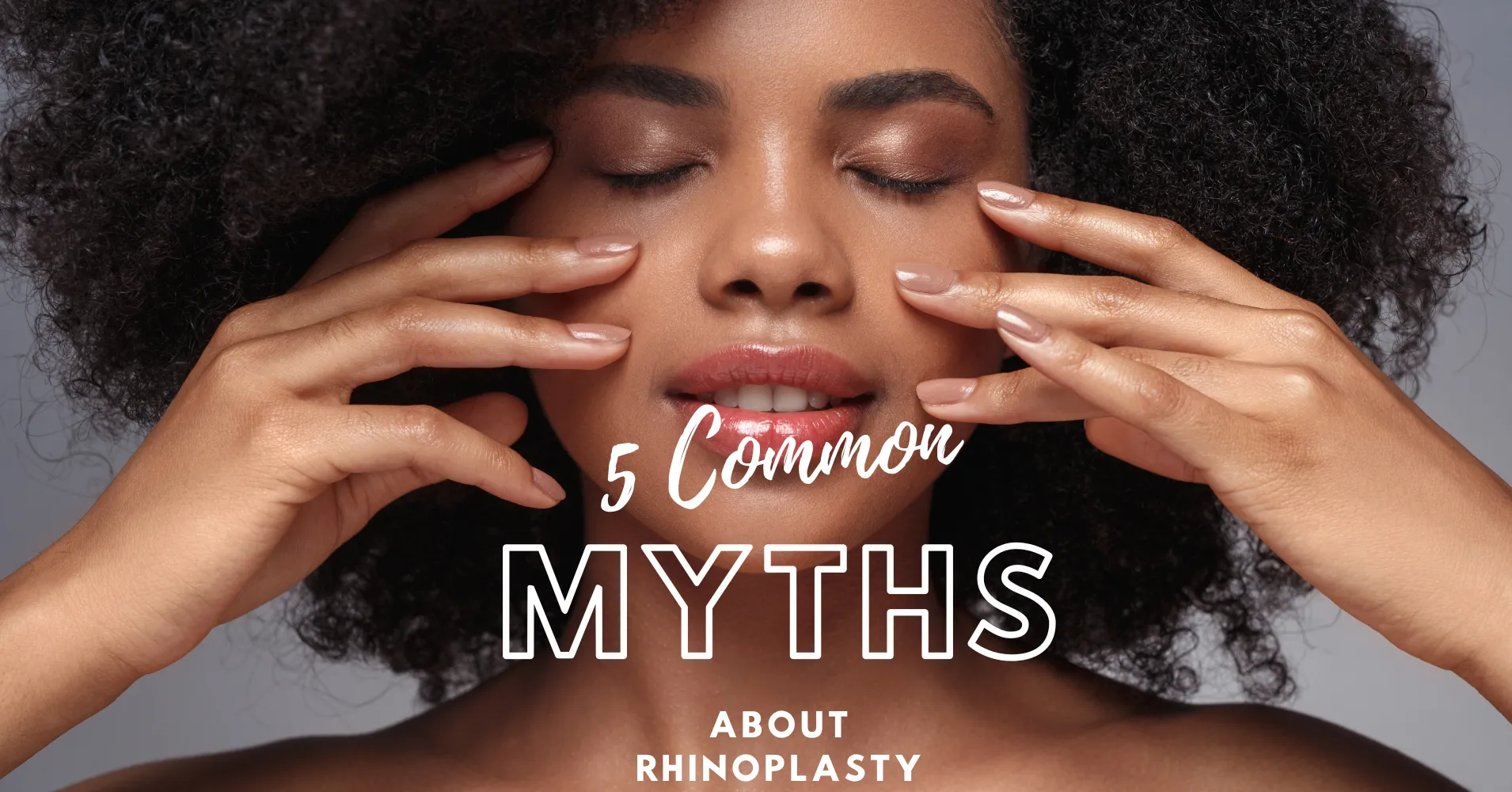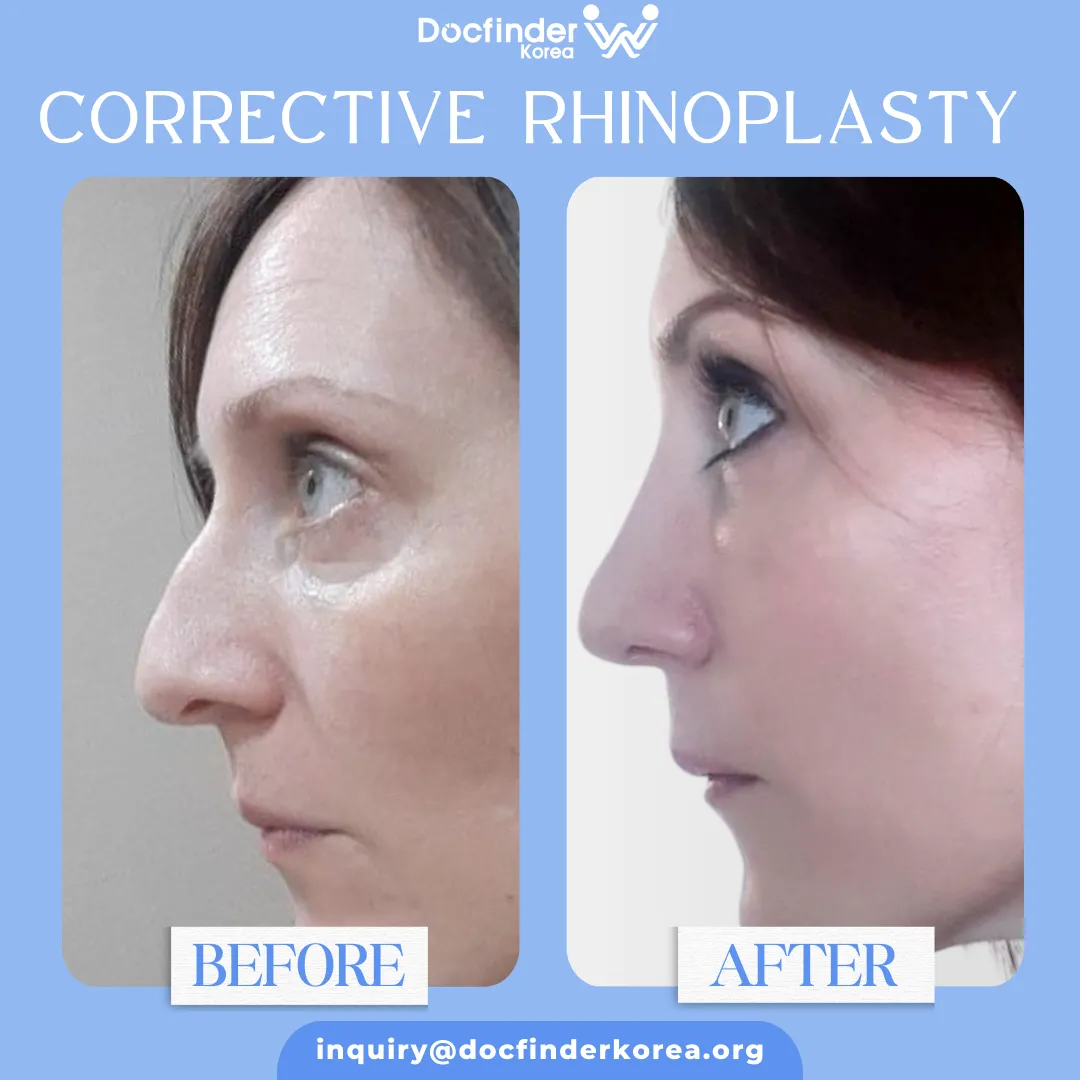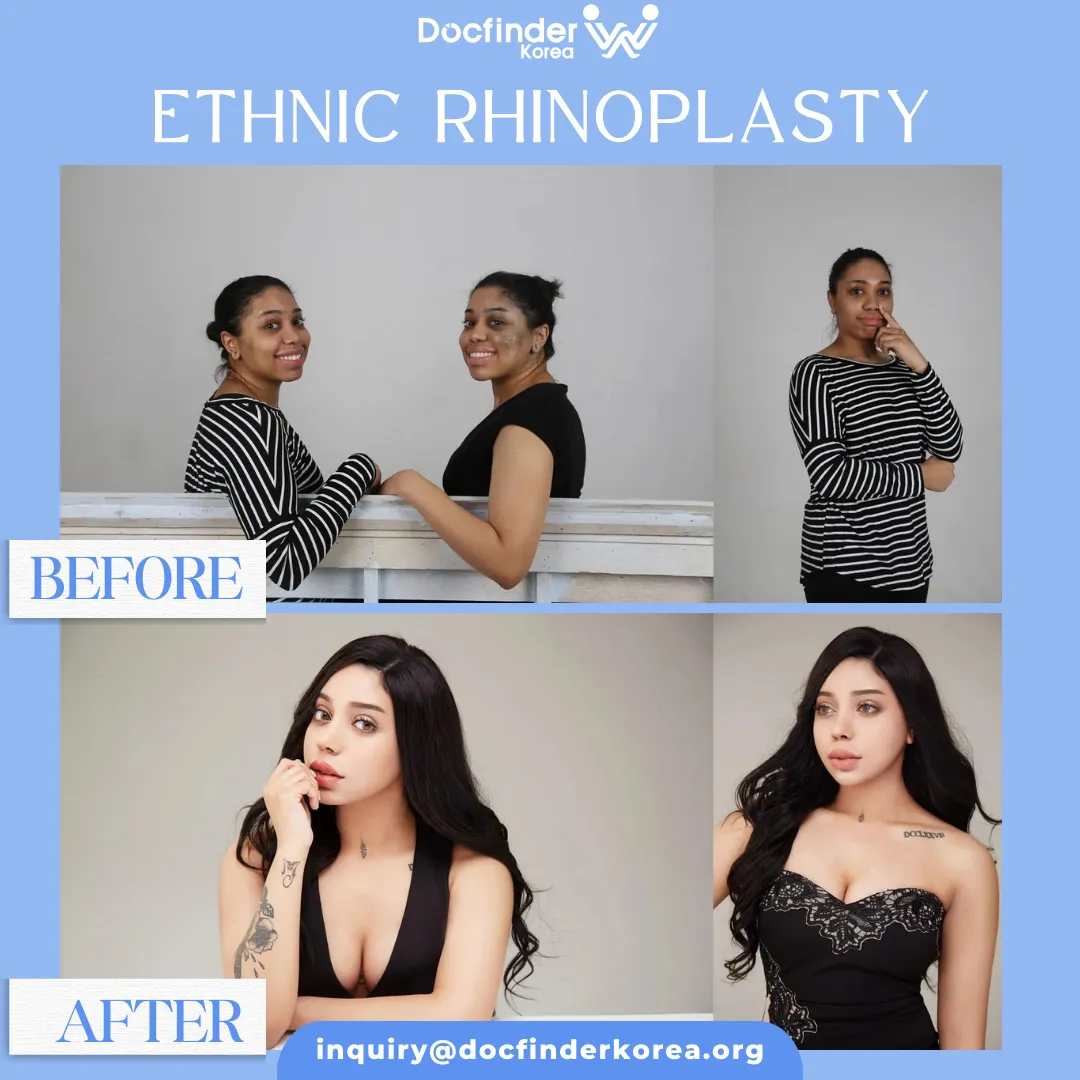Journal
5 Common Myths about Rhinoplasty
2024-04-17
Nose

Rhinoplasty surgery also known as nose job or nose reshaping surgery, is considered one of the most popular procedures in Korea, and it is a suitable surgery for people who suffer from deformities or curves in the nose, and want to correct it, improve their external appearance, and enhance their self-confidence.
In the current era, the era of medical and technological development, hundreds of thousands of cosmetic interventions are performed daily, and with the spread of information very quickly through various types of social media, it is easy to view the results of cosmetic procedures and learn about the techniques performed. However, in this great mass of information, not everything that is said or reported from blogs, non-medical websites, and private pages may be true. Rhinoplasty for example, and due to the procedure’s great popularity in various countries of the world, was and still is the subject of interest for many, which created many myths about it that have no scientific basis.
In this blog, we will present to you the most common myths about rhinoplasty.
Myth No. 1
Non-surgical rhinoplasty using dermal filler injections gives permanent results
Rhinoplasty using dermal filler injections, also known as liquid rhinoplasty, is among the methods that some may seek to alter the nose in a safe way without potential side complications or a long recovery period. Some people may be hesitant about the idea of undergoing surgery, so they resort to non-surgical alternatives.
During rhinoplasty with dermal fillers, the doctor uses hyaluronic acid and injects it at the top and bottom of the bridge of the patient's nose in order to fill specific areas, especially the convex ones. The doctor might also inject the tip of the nose to lift it and make the nose appear smaller. The operation lasts a maximum of 15 minutes, and it gives patients the opportunity to change their noses without making surgical incisions.
Candidates for rhinoplasty using dermal filler injections or liquid rhinoplasty
- People who suffer from small nasal protrusions with a slightly drooping tip of the nose.
- People with small flaws.
- People who are not qualified to undergo anesthesia or people who fear complications from anesthesia.
- People who feel hesitant about undergoing surgery.
- People who do not want a prolonged recovery period.
However, it is necessary to remember that the effectiveness of fillers is not long-term, as it ranges from six months to a year, and contrary to what some may think, liquid rhinoplasty is not a procedure free of defects, including:
- High probability of swelling at the injection site and redness of the nose after dermal filler injection.
The possibility of not obtaining the desired results is high, especially since the changes that the procedure can bring about are limited.
- The possibility of side effects appearing if the person is allergic to the filler.
Myth No. 2
The results of rhinoplasty look unnatural (fake nose)
It may be easy to distinguish whether a person has had a rhinoplasty if you have previously known the person and will compare what the nose was and what it has become, but when it comes to people we do not know, you cannot distinguish easily, especially if the rhinoplasty was performed by a skilled and experienced surgeon. It will be difficult to detect a rhinoplasty that was performed carefully and professionally. Choosing to undergo the “natural” model of rhinoplasty ensures that your nose job procedure remains a secret.
Some people may choose a specific nose shape that is already known to be not natural, such as “Dolly” or “Barbie”, and it is their choice after all.

Myth No. 3
The results of rhinoplasty performed on a fleshy nose are unsatisfactory compared to the results of a bony nose job
It is very important for the patient, before undergoing a rhinoplasty surgery, to know the type of nose (bony nose and fleshy nose) and the characteristics of each. In addition to that, it is necessary to choose the appropriate and experienced surgeon with extensive experience in rhinoplasty surgery, especially the type of nose of the patient, in order to guarantee the aimed outcome.
The type of nose, whether fleshy or bony, is determined by the thickness of the skin. When the skin of the nose is thin, the details of the nose structure are visible, and the cartilage usually has a strong and stable structure that makes the tip of the nose firmer. While the thickness of the skin in a fleshy nose might obscure the details of the nose, the cartilaginous tissue is usually less firm and strong. The surgeon uses different techniques depending on the type of nose, and one of the most prominent challenges the surgeon faces with a fleshy nose is reconstructing or shaping the tip of the nose. The danger lies in the possibility of deviation of the tip of the nose or the entire lower part after surgery. Therefore, we warn against recklessness when deciding to have a nose surgery and choosing the appropriate surgeon to perform it. Unlike a fleshy nose, simple adjustments to the tip of a bony nose can make a big difference.
How can you find the right surgeon for rhinoplasty in Korea?
Korea is considered the capital of safe plastic surgery, and it has many surgeons who specialize in many fields, including plastic nose surgery. If you are looking for a skilled, highly qualified, and experienced nose surgeon in Korea and have no idea how to find and contact the best surgeons, all you need to do is contact us. We as the Docfinderkorea team, are very happy to help you achieve your dream of having a beautiful nose.
Qualifications of an experienced nose surgeon:
The surgeon must be board-certified and have many years of experience.
- The surgeon is able to communicate well with the patient and pay attention to his/her preferences. He is able to listen patiently and devotes a lot of time to explaining the patient’s condition, the suggestions that suit him/her, possible complications, and how to care for the surgical site after the operation to ensure a faster recovery period. The patient can watch videos of the surgeon with his patients during the consultation so that he/she can evaluate the extent of the surgeon's ability to understand the patient's aspirations.
- The surgeon must have a high sense of aesthetics and be able to highlight and enhance the beauty of patients, regardless of the patient’s features, origins, or race.
- The surgeon respects the ethics of his profession and does not put material benefit above the patient’s health.
- The surgeon is familiar with the latest surgical techniques for rhinoplasty.
- The surgeon is keen to check up on his patients after surgery, with support and follow-up, especially during the recovery period.
Myth No. 4
Closed rhinoplasty is safer than open rhinoplasty
Choosing the proper rhinoplasty technique is among the most important steps that are determined during the in-person consultation with the surgeon. However, patients often ask whether open nose surgery is unsafe because it involves lifting the skin, external incisions, or other information that may be incorrect. Both techniques have advantages and disadvantages, and the surgeon makes the final decision in choosing the appropriate technique for the type of nose (fleshy nose or bony nose) and the results to be obtained.
Cases that require closed rhinoplasty:
- Curved/hooked nose
- Low or drooping tip of the nose
- Nose shape deviation
- Asymmetry of the nostrils (nasal wings)
- Defects in the bridge of the nose (dorsum of the nose)
Cases that require open rhinoplasty:
- Major deformities/trauma in the nose
- Deviated nasal septum
- Functional disorders of the nose, such as difficulty breathing and snoring when sleeping
- Nasal congestion resulting from sinusitis
Myth No. 5
Korea is not the right choice where to undergo ethnic rhinoplasty
The primary goal of an ethnic nose job, or ethnic rhinoplasty, is to improve the appearance of the nose without compromising each person's unique ethnic characteristics.
Many clinics and hospitals in Korea specialize in ethnic rhinoplasty, as experienced and skilled surgeons perform several procedures annually on patients from different ethnic backgrounds and diverse preferences.
Ethnic rhinoplasty is suitable for people who want to make changes to the nose without radically changing their entire appearance and is inclusive of people of African, Latin, or Asian descent.
- African nose: It is characterized by its large size due to the enlargement of the cartilage and nasal bones and the widening of the nostrils.
- Asian nose: It is characterized by a small size and a flat nose.
- Latin nose: It is distinguished by its length

FAQ
How can I deal with nose swelling after rhinoplasty?
Swelling after rhinoplasty surgery is one of the side effects that might occur. Doctors usually recommend a set of tips that must be followed to help manage swelling effectively, which are as follows:
- Use ice compresses on the swollen area to reduce inflammation and reduce swelling.
- Take prescribed medications on time, especially anti-inflammatory medications, which help manage the problem.
- Walk for periods daily.
Is it safe to use silicone implants in rhinoplasty surgery?
The use of a silicone implant helps the surgeon shape the bridge of the nose, correct its slope, and improve the appearance of the nasal tip. The result gives a high and symmetrical nose. And it's safe.
What are the most important changes included in rhinoplasty surgery?
- Correction or reduction of the bridge of the nose (dorsum of the nose).
- Removing the convexity of the bridge of the nose.
- Raising the drooping nasal tip, or narrowing and reducing it.
- Correction of deviated nasal septum.
- Correcting the asymmetry of the nostrils.
- Narrowing the tip of the nose by removing part of the alar cartilage.
- Reducing the base of the nose.
- Changing the angle separating the upper lip and nose.
How much does rhinoplasty surgery cost in Korea?
There are many factors that are taken into consideration to determine the total cost of rhinoplasty surgery, and they basically vary from one person to another depending on features, ethnic backgrounds, degree of deformities, and type of surgical technique. Therefore, it is difficult to determine costs at this stage (before the consultation with the surgeon), but we are aware of how important the economic factor is for our patients coming from different countries of the world, so we offer a free online consultation service through which surgeons in our partner clinics evaluate your pictures and provide Initial surgical advice and plans with an explanation of prices. Our partner clinics offer a range of promotions and discounts to our patients.
Also, check out Docfinderkorea's free services:
- Medical advice
- Information about the hospital and doctor
-Booking hospitals and hotels
- Medical translation
- Solve any problems that might occur throughout the procedure journey
- Assist you in all stages of medical procedures (consultation, surgery, treatment, examination and aftercare)
- Monitor and check whether the clinic changes the doctor
- Emotional support
- Save up to $1,250 in duty-free mileage points online
- Price negotiation with the hospital (for surgery patients)
- Transportation to and from the airport (for surgery patients)
- Reception and transportation in Seoul for all medical schedules (for surgery patients)
- Providing pumpkin juice and prescribed medications (for surgery patients)
- Run errands on your behalf (for surgical patients)
- Take you to a big supermarket, hair salon or anywhere you want to go (for surgery patients)
- Providing a free one-time shopping tour after surgery (if requested) (for surgical patients)
- Providing free transportation for post-operative examination (airport, Seoul) within one year after surgery (for returning surgery patients)
- Providing bonus points that can be used at any of our partner medical institutions within 3 years after surgery (for returning surgery patients)
Related videos:
The best nose implant for rhinoplasty | Rhinoplasty Q&A
Related readings:
Back


